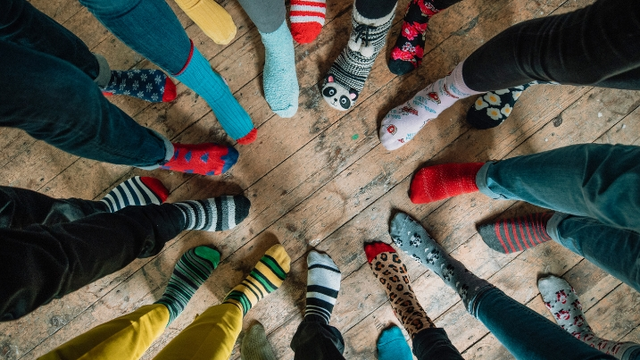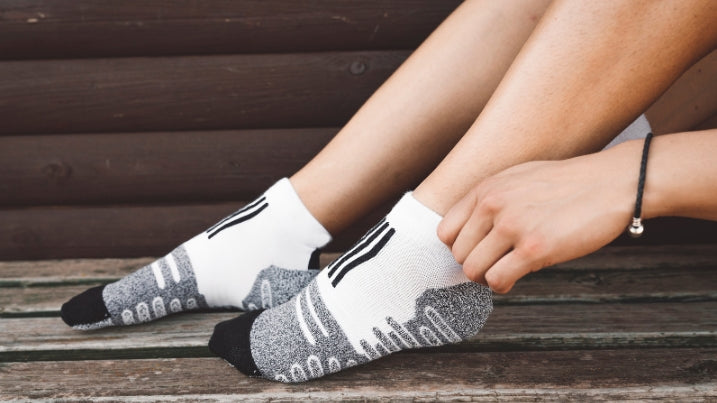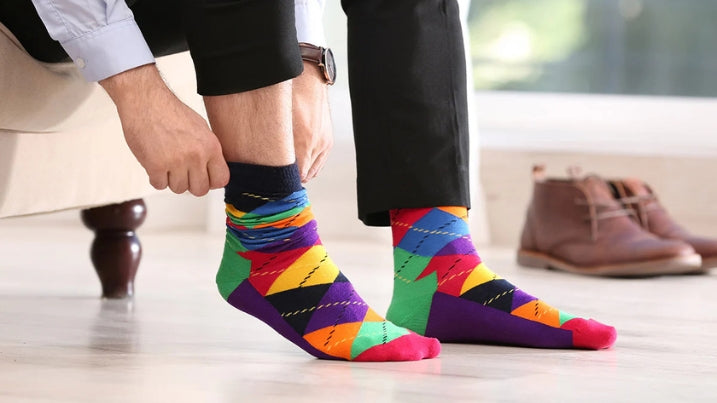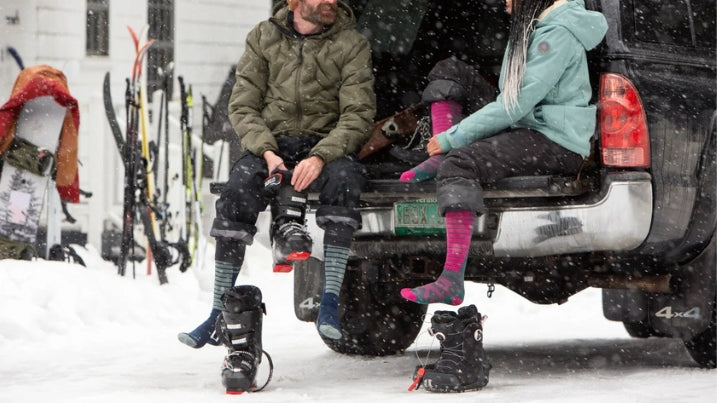Tips to Protect Your Feet and Ankles in Bad Weather June 29 2020 0 Comments

Whether it is raining, snowing or just plain cold, bad weather can be unpleasant. In particular, cold, damp and slippery conditions are tough on your feet and ankles. Fortunately, with the right pair of moisture wicking socks, a good pair of shoes and a few tips, you can help protect your feet even in the harshest conditions.

1) Always Wear Appropriate Footwear
Perhaps the most important thing you can do to protect your feet in bad weather is to wear appropriate shoes or boots. The right footwear depends on the circumstances. For example, if you expect it to be cold, choose insulated boots. If you expect it to rain or otherwise be wet, choose a pair that is waterproof.

Make sure your shoes or boots fully cover your feet. If you expect to be on unstable or slippery ground, choose a pair of boots with ankle support. This can help to protect your feet from injury. Also, make sure that your footwear fits properly (it should not be overly tight but should be snug and secure on your feet) and is laced correctly.
2) Watch Where You Are Going/Standing
The surface you are walking or standing on can greatly impact your foot and ankle safety. Some considerations are obvious such as avoid stepping in puddles or mud. However, some problems may not be immediately noticeable. For example, if you are standing and working for a while on a hard surface, it can cause extra strain on your legs. Consider using an anti-fatigue mat or some custom socks that help cushion your feet.

Paying close attention wherever you are walking. During bad weather, it is much easier to slip. The key is to be very aware of your surroundings. Remember that snow or leaves may conceal a slippery surface on the ground. Similarly, wet surfaces can be dangerous. Watch where you are walking and avoid rushing.
3) Keep Your Feet Dry
Keeping your feet dry is one of the most important ways to protect them. Letting your feet get wet can cause irritation and sometimes even more significant injuries. Wet feet are also more likely to get cold. In extreme circumstances, this can be potentially very dangerous. It may even lead to frostbite.
The best solution, of course, is to keep your feet away from any damp areas. However, this isn’t always possible, especially when working outside. Wearing moisture wicking socks is a simple way to ensure that your feet stay dry. These types of socks help pull moisture away from the skin and also dry very easily.
Additionally, try to avoid wearing socks for too long if your feet do get wet. Having a spare pair of custom socks on hand is a good idea if you are working in bad weather for an extended time.
4) Stay Active
If you are staying still for too long, it can cause your feet to get overly cold. Additionally, it will cause your circulation to worsen. Wearing your best socks and insulated shoes can help. However, there is no replacement for activity.
Try to avoid standing or sitting in a single spot for too long. Moving around periodically is good for your well-being even in the best possible conditions. In bad weather, it is an essential tip for avoiding foot and ankle harm.
It is also a good idea to learn a few simple exercises. Try moving your toes periodically, rotating your ankle slowly and contracting then relaxing your calf muscles. Another option is just to move briskly for a few moments or to jog in place. A small amount of activity on a regular basis will keep your feet and ankles healthy.
5) Get Help Quickly When Needed
Perhaps the most important thing you can do to protect yourself is to recognize and respond to injuries promptly. If you fall or otherwise hurt yourself, don’t just shake it off. In some cases, sitting in a warm, dry area and taking off your shoes to rest temporarily may be enough. In other cases, you may need to seek medical attention. In the event of a fracture, significant laceration or another major problem, go to the emergency room.
It is almost always better to be more cautious than not. Trying to just keep working even when you have hurt your ankle is a fast way to worsen the problem. At the very least, get help from a friend or colleague to move to a safe area. Then, inspect the foot. If there is significant swelling, bruising or other damage, seek medical attention.
Order the Best Socks for Bad Weather
Wearing the right socks will help you protect your feet in all sorts of weather. Socks Rock’s moisture wicking socks could be your answer for cold and wet weather. We have plenty of designs and styles. So, you can be confident you’ll find the right pair for you. Explore our catalog today to find some socks that you love.












